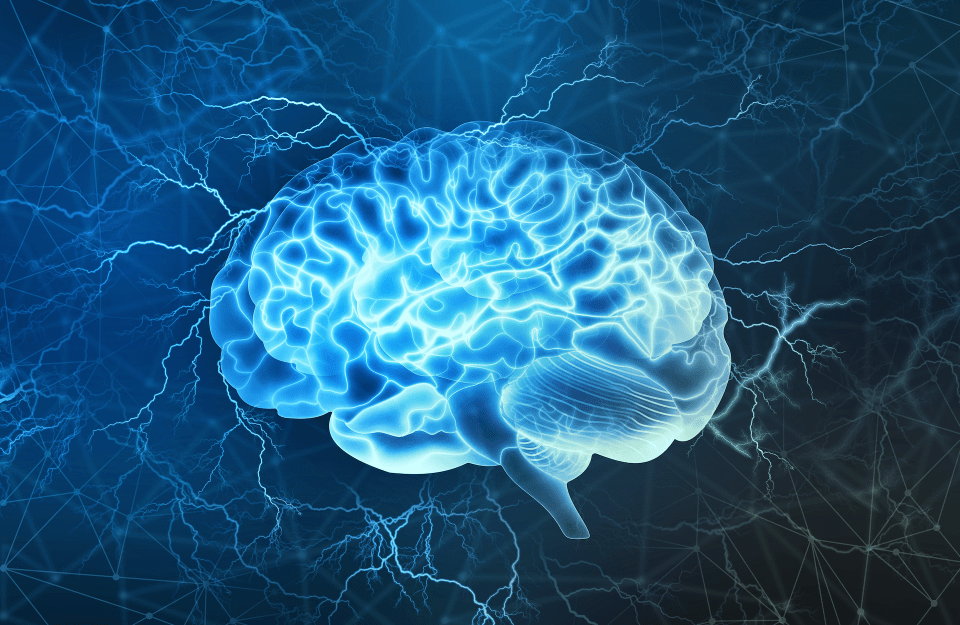A New Study Shows How the Brain Processes Partisan Information
Researchers from Annenberg, Columbia University, UC Berkeley, and Dartmouth College used fMRI data to explore how partisan messaging is processed in the brain.

In the lead-up to the U.S. presidential election, discussion about the effect of partisanship is commonplace. It has long been known that partisanship creates a lens through which people experience the world. A new study recently published in Cerebral Cortex is making strides towards a nuanced understanding of the neural underpinning of this partisan lens.
A team of researchers from the Annenberg School for Communication, Columbia University, UC Berkeley, and Dartmouth College sought to understand how different kinds of partisan messaging are processed in the brain. Specifically, they asked whether partisan messaging that focuses on policy is neurally processed in the same way as messaging that foregrounds partisan identity and emotions.
“There are two common notions of partisanship; one centers on political identities as Republicans and Democrats, while the second centers around policy positions on the issues — economy, immigration, healthcare — and so on,” said Nir Jacoby, postdoctoral fellow at Dartmouth College, who led the study as a graduate student in Professor Kevin Ochsner’s lab at Columbia University. “To this day, it was unclear how these two notions relate to each other and whether one takes some form of precedence over the other.”
To test the question of whether different partisan lenses work differently in the brain, the researchers gathered fMRI data from 61 participants between July 2017 and August 2018 as they watched video clips that either discussed policy-specific issues or denigrated people from “the other party” and its leaders.
The researchers then searched for parts of the brain that — for a given person — responded similarly to the brains of other participants who shared their political affiliation (i.e., their partisan “in-group”) over those who did not (i.e., their partisan “out-group”). By doing so, the study sought to identify the neural bases of “partisan lenses” that lead members of a given political group to respond similarly to political messaging.
The study found there was no single brain region associated with processing different types of partisan information. Instead, when processing policy-based messaging, a partisan lens effect was observed in regions otherwise associated with socio-political reasoning and emotional responding.

At the same time, when viewing negative identity-based attacks, a partisan lens effect was observed in brain regions for emotional responding and understanding beliefs and intentions.
These data suggest that the processing of political discourse that appeals to different forms of partisanship is supported by related but distinguishable neural — and, therefore, psychological — mechanisms, which may have implications for how we characterize partisanship and ameliorate its deleterious impacts.
“American politics has become increasingly partisan with a tendency to view the world through partisan lenses,” said Emily Falk, Vice Dean of the Annenberg School for Communication and Director of Penn’s Communication Neuroscience Lab. Falk worked closely with the late Emile Bruneau, whose Peace and Conflict Neuroscience Lab collected the data on which this study is based.
“I know that Emile’s vision in collecting these data was to try to help us see a different path forward — one where we can find better solutions and more common ground — together,” she added.
This publication is one of the last neuroimaging studies using research from Dr. Bruneau’s work at the University of Pennsylvania. Dr. Bruneau approached this study with deep convictions that a better understanding of what sets us apart is needed to bring us together.
“This study demonstrates how insightful Emile was,” said Marika Landau-Wells, Assistant Professor of Political Science at UC Berkeley. “There’s been a lot of talk about using the tools of neuroscience to better understand politics, but Emile showed how it could actually be done and that there are some aspects of politics that can’t really be investigated any other way.”
“The results of this study are a reminder that there are no simple answers,” said Jacoby. “Any explanation about the ‘the partisan brain’ grossly simplifies the complexity of the processes that combine different sorts of reasoning and emotions.”
“Partisans process policy-based and identity-based messages using dissociable neural systems” was published in Cerebral Cortex and authored by Nir Jacoby, Marika Landau-Wells, Jacob Pearl, Alexandra Paul, Emily Falk, Emile Bruneau, and Kevin Ochsner.



